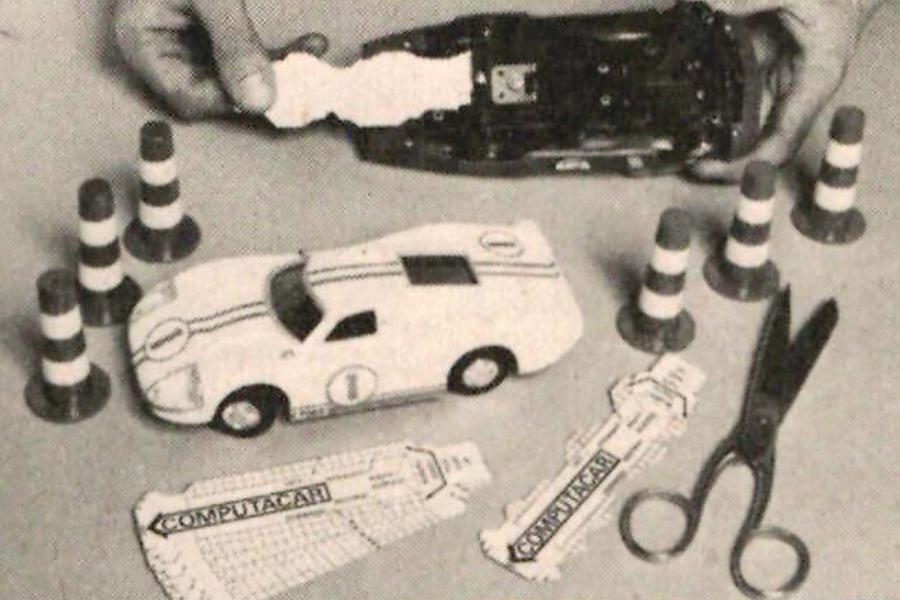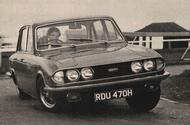Less aerodynamic drag meant the heavier 2000 was no slower than its predecessor
Triumph’s flagship 2000, the Mettoy Ford GT40 and Rover’s aftermarket panoramic glass roof
Triumph didn’t hold back in its race to improve its flagship, upgrading the 2000 to a Mk2 just a year after giving it the TR6 sports car’s engine to create the 2.5 PI.
The Coventry firm stretched the 2000 by some 22cm and made the cabin yet plusher, increasing weight by around 50kg but not resultantly denting performance, because Michelotti’s new design created less aerodynamic drag.
The tasteful curved wooden fascia, leather-rimmed sports wheel and multi-purpose levers “deserved the highest praise”.
We weren’t keen on the softer suspension, which borderered on sloppy, but we liked tremendously the new option of power steering, even if it diminished the feel a bit.
At about £1800 (£23,895 today), the 2.5 PI was rather pricier than the carburetted 2000, but then its 2.5-litre straight six produced almost 50% more power than the 2.0-litre one (132bhp over 90bhp).
“At that price, it’s still good value, possessing an unusual amount of refinement, luxury and very brisk performance. It’s very satisfying, standing up well against European competition for quality, refinement and efficiency as much as appearance.”
Sadly, it would be the last big Triumph, the Rover SD1 being the flagship of a more consolidated British Leyland from 1976.
The toy Ford GT40 and other motoring-related Christmas presents
This Christmas, children and adults alike will mostly have hopefully put eyewideningly expensive and complicated electronics on their Santa wishlists. Life just used to be so much simpler, as evidenced by our 1969 gift guide.
The gadget that brought the Autocar office to a standstill? Not a digitally modelled Ford GT40 that you could race on perfectly recreated tracks against other people from all over the world in real time, but a battery-operated model of a Ford GT40 into which you could feed cards to make it drive itself through a series of little cones. This Mettoy toy must have been mind-blowing back then.

More affordable but probably no less exciting for young boys (and their dads!) was the arrival of Superfast Matchbox cars, these coming with low-friction tyres and, as an extra, a plastic race track.
For the grown-ups, the exciting (ahem) prospects included a little label-maker, coloured plastic carkey caps and a vacuum cleaner that ran off your car’s cigarette lighter.
We would’ve got into the festive spirit properly, though, and instead gifted a Smiths motoring watch, Sir Jack Brabham’s suave leatherand-kangaroo-skin driving gloves, Chris Amon’s cool hooded Can-Am jacket or some simulated-rhinohide driving shoes from Scholl.
Rover’s aftermarket panoramic sunroof
A panoramic glass roof is virtually an expectation on a more expensive car these days, but back in 1969 it was a real novelty when offered by Rover as an aftermarket option on the P6 saloon. Made by Roof Installations Ltd of London using green-tinted, toughened Sundym glass, it cost a fair £125 (£1660 in our money).

“It is like watching a storm at sea on Cinerama; you feel insulated and safe from the elements,” we marvelled. “With continued acquaintance, it just makes motoring a brighter and happier affair, even in a thunderstorm.” Very few people ordered it, though.
AMC’s low-volume UK presence
For many decades, the US industry has had a ‘big three’: Ford, Chrysler and GM. But until 1988 there were four, and AMC once even enjoyed a significant UK presence, selling as many as 40% of our American cars in the late 1960s through its Rambler outfit in Chiswick. Volumes weren’t high, however, even with factory right-hand drive – no shock when you see that it in 1969 launched a car such as the Ambassador SST Wagon, a vast, thirsty V8-powered, wood-panelled eight-seater for £3122 (that would be £41,445 today)
Source: Autocar
